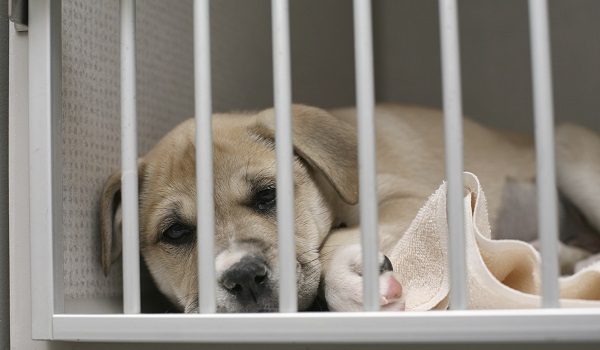If you are a homeowner, you probably take precautions to prevent theft of your most valuable possessions. If you have a car, then you probably keep it locked up so it can’t be stolen. Most people take numerous measures to prevent theft on a daily basis, but few realize that their dogs are at risk for being stolen as well. A rising trend called “dog flipping” affects thousands of dogs each year.
What is dog flipping?
Dog flipping is a new trend in which thieves steal a dog from their pet parent and then resell them for a profit. Purebred dogs like Labrador Retrievers and German Shepherds are some of the most popular dogs to steal, as are smaller breeds like the French Bulldog and Pomeranian. Pit Bulls and Pit Bull mixes are also at a high risk for being stolen.
What happens to the dogs after they are stolen?
Some of the dogs will be resold to unsuspecting people who do not know that the pup was taken. Other dogs might be sold to pet stores, used as breeders in puppy mills, or sold to research labs to be used as test subjects. Even more frightening is the fact that many of the dogs that are stolen find their way into the dog-fighting trade, and used as bait or as fighters themselves.
How do thieves steal dogs?
Stealing a dog is easier than you might think. Sometimes all a thief has to do is walk into your yard, open the back gate, and whisk your pup away. Thieves also prey upon lost dogs, claiming to be their pet parent and taking them from the pound or person who found them. These thieves may then turn around and sell the pup on Craigslist or on various social media platforms.
Tips for preventing dog theft
Theft is a very real threat for your dog, but you can do your best to protect him. Always keep your dog indoors when you are not at home and never leave him unattended in the yard, even if it is fenced. Be especially careful about allowing meter readers and repair personnel onto your property or into your home – make sure you know where your dog is when these people come around and keep him safe inside the home. You should also be wary of strangers in your neighborhood – be suspicious of anyone who seems too interested in your dog.
Always make sure your dog is carrying proper identification – he needs an ID tag with your phone number on it, and should be microchipped as well in case he loses his tag. If your pup happens to get lost, take immediate action to find him before it is too late. Start by calling local shelters with a description of your dog as well as your contact information. Put up flyers in your area and offer a reward if you are serious about getting your dog back. Walk or drive around your neighborhood, and talk to your neighbors to see if anyone has seen your pup.
If you find that you are unable to care for your dog, do not just hand him over to the local shelter - you do not know who might end up taking him. As a pet parent, you are responsible for your pup’s welfare so it is your responsibility to find him a new home if you can no longer care for him. It is fine to place ads in the paper or online, but be sure to vet any potential pet parents thoroughly before you send your dog home with someone else. The last thing you want is to hand over your dog willingly to someone who does not have his best interests in mind.
It is heartbreaking to lose a dog, but even more frightening is the idea that your dog might be sold for laboratory testing or used in dog fighting. By making sure that your pup carries proper identification and that you know where he is at all times, you can help to prevent him from becoming a dognapping victim.
This article was provided by our partners at lovepets.com
To Read More From LovePets:
Photo ©iStock.com/hayesphotography


